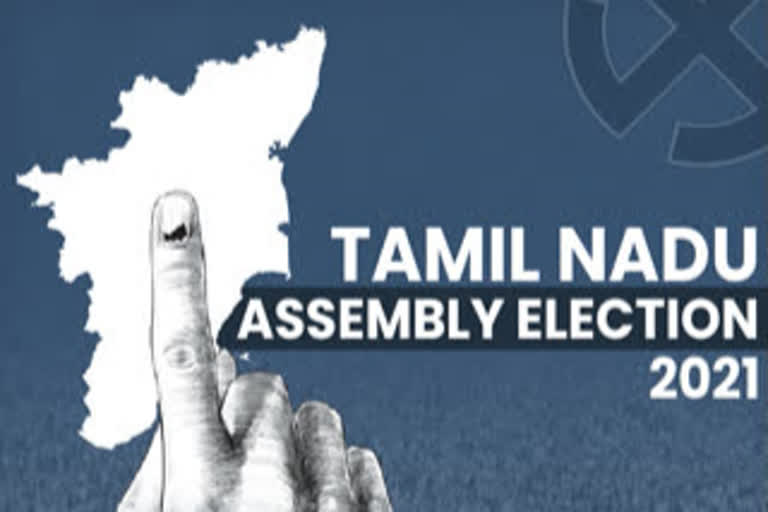Chennai: It is a long wait for the results to come though Tamil Nadu has voted. People have gone back to their routine, but political parties have deployed party volunteers to keep round the clock vigil at the counting centres where the EVMs are kept till May 2, the D-day.
With the polling percentage remaining almost the same as the 2019 Lok Sabha elections, the opposition DMK camp is upbeat about a landslide victory.
The ruling AIADMK-BJP combine too is hopeful of the tide turning in its favour. As such, what does the high voter turnout foretell us? Was it a silent tsunami?
Now that the dust following the no-holds-barred campaign had settled down, which way the pendulum had swung could become more clear.
For the DMK, alliance arithmetic and double anti-incumbency provide the advantage.
Also Read: Impressive turnout in high-stakes assembly elections
Consolidation of the anti-Modi narrative coupled with the fuel price hike, ought to have gone in favour of the DMK-led Secular Progressive Alliance. In the case of the AIADMK, tie-up with the BJP was considered a liability and the burden of carrying the NDA fell on the shoulders of Chief Minister EdappadiK Palaniswami (EPS).
Yet, the fact that he had completed a full term in office without much negative image is expected to stand in good stead.
While both the Dravidian camps are expecting the verdict in their favour, AIADMK sources admit that even an 'honourable defeat' would be a victory for EPS. In their reasoning, the party had put up a good fight, ensuring that it is no cakewalk for the DMK.
Some analysts are inclined to bat for the AIADMK citing the 2016 Assembly election in which the polling percentage was 74.24% resulting in the AIADMK under Jayalalithaa retaining power, a feat only her mentor MG Ramachandran had achieved.
Countering this view, senior journalist Dayalan Shanmuga argues that in 1996 the state recorded only 66.95% voter turnout despite a massive wave against the then Jayalalithaa government.
Also Read: Just over 65 pc voter turnout recorded in Tamil Nadu Assembly polls
“This election should be seen as a continuation of the 2019 LS poll. That is the benchmark to look at in 2021. The anti-Modi narrative has reached its crescent in 2019 with the DMK-led alliance pocketing 38 of the 29 LS seats in Tamil Nadu. It has not dissipated but got consolidated now despite Prime Minister Modi and a host of BJP heavyweights campaigning the length and breadth of the state. The voting pattern in Chennai city as well as in the districts shows a similar pattern as was the case in 2019. It is a silent tsunami and nothing less,” Dayalan reasons.
In 2001, the voting percentage was just 59.07, the second-lowest in the state since 1957. But, the incumbent Karunanidhi government was voted out and Jayalalithaa returned to the helm.
According to psephologist P Ramajayam, each election has its own dynamics and this one is unique. “Not only it had thrown up more Chief Ministerial aspirants, it has also corporatised electioneering and brought in hero worship. Given the strength of the respective alliances and the potential poaching of Kamal Hassan's MNM and Seeman's ultra-nationalist Naam Tamilar Katchi (NTK), in the vote share of DMK and AIADMK, the winning margin could come down. Yet the pendulum appears to have swung towards the DMK. It is a political choice,” he explains.
Also Read: Tamil Nadu Assembly election 2021: All you need to know



